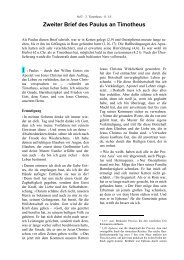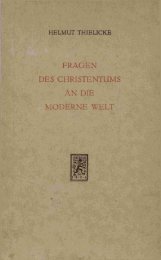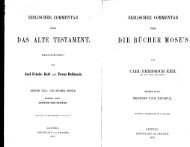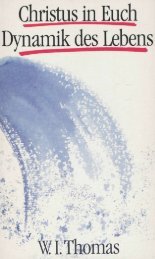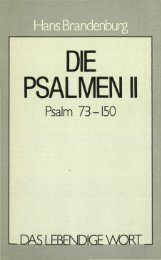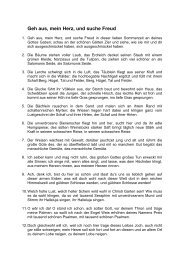Create successful ePaper yourself
Turn your PDF publications into a flip-book with our unique Google optimized e-Paper software.
waves at different frequencies, exerting the same<br />
pressure, are not perceived subjectively as being<br />
of equal volume. A sound at a level of 20 dB,<br />
having a frequency of 63 Hz, would have to be<br />
made about 30 times stronger in order to sound<br />
as loud as a 1,000 Hz signal at the same dB level.<br />
From the formula already given, that means it<br />
would have to be increased by 20 x log(30) =<br />
29.5 dB.<br />
By connecting the points of equal loudness at different<br />
frequencies on a dB-Hz diagram, curves<br />
known as isophones result. By definition, the<br />
measured sound pressure in dB at a frequency of<br />
1,000 Hz is the loudness, expressed using a unit<br />
known as the phon. So for example, if one wants<br />
to find the 50 phon isophone, a test subject listens<br />
to a 1,000 Hz signal having a sound pressure<br />
of 50 dB. At all other frequencies the person<br />
adjusts a control indicating dB values, until it<br />
sounds just as loud as the 1,000 Hz signal. In this<br />
way one can plot the dB values corresponding to<br />
each of the frequencies to obtain the 50 phon<br />
curve. Only at a frequency of 1,000 Hz is the phon<br />
scale numerically equal to the decibel scale.<br />
The pressure at which a sound becomes audible<br />
is called the threshold of audibility. This corresponds<br />
to the 4 phon isophone. If a sound is so<br />
loud that it causes pain, the threshold of pain is<br />
reached. Its isophone is 130 phon. If our ears<br />
were purely mechanical sound detectors, then all<br />
isophones would have been horizontal lines.<br />
We are able to distinguish very clearly between the<br />
loudness of two sounds. At low sound intensities<br />
at a given frequency, a difference of 1 dB is sufficient.<br />
At louder levels this difference is even less.<br />
12 orders of magnitude without switching:<br />
The ear has the amazing ability of detecting a<br />
range of sound pressure extending over 120 dB.<br />
Keeping in mind that 6 dB represents a doubling<br />
of sound level, this means that the human ear<br />
can handle intensities ranging over 20 powers of<br />
2 (120/6 = 20; 2 20 = 1,048,576 = approximately<br />
one million). In the case of sound energy, doubling<br />
occurs every 3 dB because of the physical<br />
relationships involved. The human ear thus has<br />
the unique ability of detecting differences in sound<br />
energy over a very wide range. The relevant factor<br />
is 40 powers of 2 (120/3) which is equal to<br />
12 powers of ten (2 40 = 1024 4 = 1.099 x 10 12 ).<br />
Expressed differently: The range between the<br />
pain threshold and a barely audible sound<br />
encompasses an energy ratio of one million million<br />
to one. This is an astonishing feat, since it is<br />
accomplished with just one range of measurement.<br />
No known technical measuring apparatus<br />
can do this without switching from one range to<br />
another. If, for example, we want to measure<br />
voltages in the range from 1 volt to 10,000 volts<br />
(4 powers of ten), it can only be done with a single<br />
instrument by switching the measuring<br />
range.<br />
Sound energy I<br />
Pain threshold<br />
Music<br />
Threshold<br />
Speech<br />
Range of normal human hearing<br />
The threshold of audibility is a curve, meaning that the<br />
ear is more sensitive to some frequencies than to others.<br />
The optimal range is between 1 kHz and 5 kHz, where<br />
sound pressures as low as 2 x 10 -5 N/m 2 can be detected.<br />
This is equivalent to an intensity I (sound energy) of 10 -16<br />
W/cm 2 . The intensity-frequency ranges for speech and<br />
music are shaded. The maximum range of hearing lies at<br />
about 2 kHz. At this frequency, the range of sound energy<br />
we are able to detect spans an almost unimaginable<br />
13 orders of magnitude (powers of ten).<br />
of<br />
audibility<br />
Frequency f in kHz<br />
Furthermore, the human ear is an optimally constructed<br />
measuring system whose sensitivity<br />
reaches the limits of physical possibility. Sound<br />
waves are pressure waves having very small<br />
23<br />
Sound pressure p




